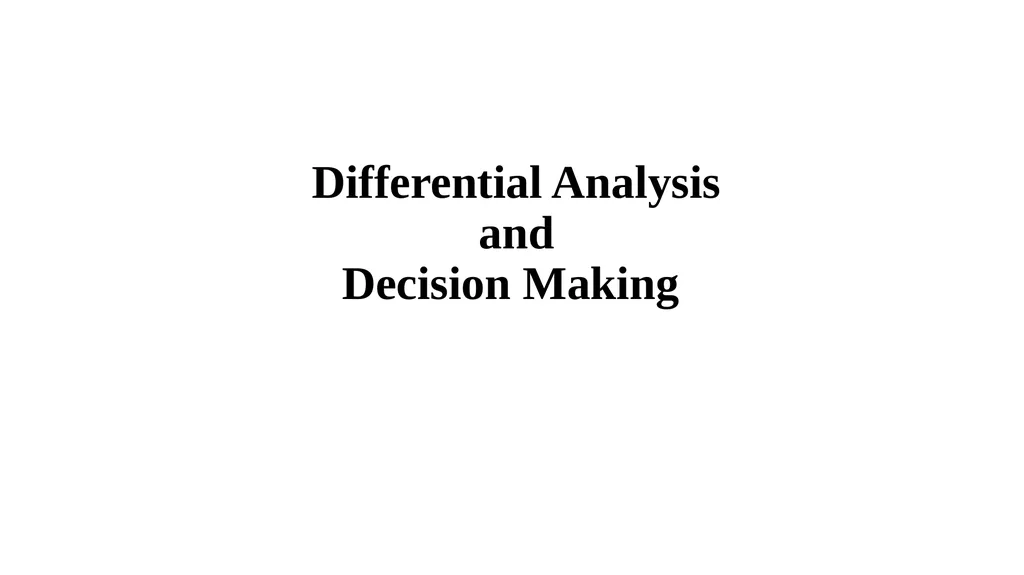Differential Analysis and Decision Making Upon
Author : phoebe-click | Published Date : 2025-05-19
Description: Differential Analysis and Decision Making Upon completion of this online module and inclass session participants will be able to Classify costs as relevant or irrelevant to a decision Understand the concept of sunk and opportunity costs
Presentation Embed Code
Download Presentation
Download
Presentation The PPT/PDF document
"Differential Analysis and Decision Making Upon" is the property of its rightful owner.
Permission is granted to download and print the materials on this website for personal, non-commercial use only,
and to display it on your personal computer provided you do not modify the materials and that you retain all
copyright notices contained in the materials. By downloading content from our website, you accept the terms of
this agreement.
Transcript:Differential Analysis and Decision Making Upon:
Differential Analysis and Decision Making Upon completion of this online module and in-class session, participants will be able to: Classify costs as relevant or irrelevant to a decision Understand the concept of sunk and opportunity costs Conduct differential analysis of relevant costs and revenue Analyze impact on profits of Special orders (with and without idle capacity) Outsourcing (make versus buy) decisions Sell or process further decisions Assigning limited resources to multiple products under single or multiple constraints Decision-Making Process Stage 4 Planning & Implementation Stage 5 Obtaining Feedback 1 2 3 4 5 Stage 1: Setting Goals & Objectives Organizations must set objectives to provide clear guidance. Tangible objectives provide benchmarks against which to measure performance. Intangible objectives: tend to be abstract may provide guidance are difficult to measure Target Profit and Target Cost Determine target selling price. Determine target cost. Determine target profit Deduct target return on sales Result is target cost Compare target cost to currently feasible total cost. The difference is the Cost-Reduction Target Redesign products and processes to achieve the cost-reduction target. Stage 2: Gathering Information Relevance Timeliness Objectivity vs. Subjectivity Accuracy Information Quality and Decision Usefulness Cost vs. Quality Identification of Relevant Costs and Benefits Relevant costs are costs to be incurred at some future time and that differ for each option available to the decision maker. Decision: Trading an old car for a new car. Identification of Relevant Costs and Benefits Stage 3: Evaluating Alternatives 3. Measure the benefits and costs of each set of outcomes. 1. List decision alternatives in the order the decisions must be made. 2. Trace the path of each decision to its ultimate outcome. Consider qualitative as well as quantitative factors. Stage 3: Evaluating Alternatives Anticipating future outcomes of each action Consider the past Although past costs are sunk and therefore irrelevant, they can be used to help estimate future costs that are relevant. Completely new products Use prototype products to estimate costs. Consider consultants who have knowledge of similar products. Outsourcing or Make-or-Buy Decision When the company needs goods or services, should they be “made” internally or “bought” externally? When goods or services are acquired externally, it is called “outsourcing”. Outsourcing or Make-or-Buy Decision Is it cheaper to make or buy? How dependable is the supplier? What are the relevant costs? Outsourcing or Make-or-Buy Decision Identify the fixed costs that we could avoid if we














